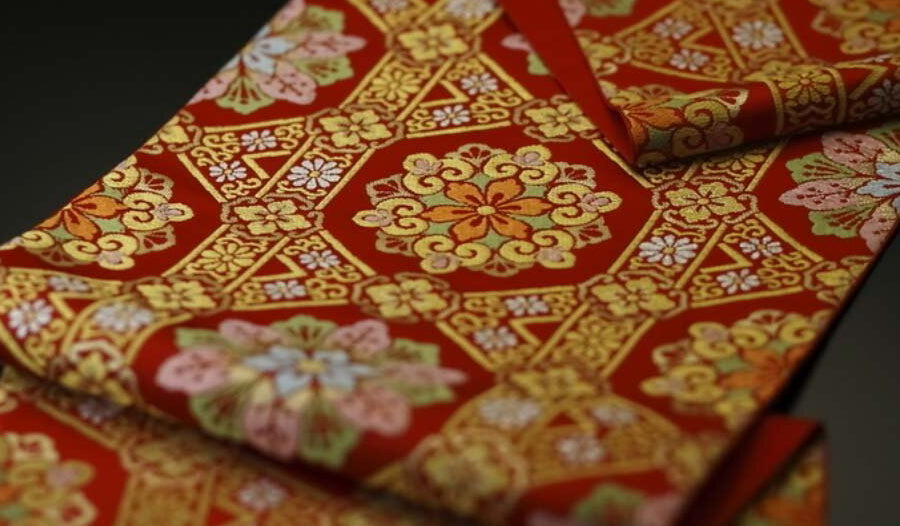
Celebrating Japan

Today on the blog we are celebrating the ingenuity of Japanese design and textiles to coincide with the opening of the Tokyo 2020 Olympics. Japan House London has an excellent collection of new displays and exhibits (available online and in-person) for those who are interested in learning more about the designers behind the Olympic torch and logo, as well as film screenings shining a light on pioneers of Japanese textile design.
In partnership with NHK World Japan, they are hosting a series of documentary screenings exploring the beauty and diversity of Japanese textiles. In Tango Chirimen: The Finest Texture in Silk Crepe discover the origins and evolution of Tango chirimen, a type of crimped silk crêpe that has been produced for over 300 years in the Tango region of Kyoto Prefecture.
The Tango region, located on the northern coast of Kyoto Prefecture, is Japan's largest producer of chirimen, the supple silk textile which accounts for 60% of all kimono fabric. The elegantly crimped texture of chirimen makes it easy to dye; however, with the proliferation of new styles of clothing and the subsequent decrease in demand for kimono, production has dropped to 3% of the industry's heyday. The COVID-19 pandemic was an additional blow. Today, young artisans are searching for new ways to use their experience and knowledge to produce luxury silks. In the film you can discover how this 300-year-old textile has evolved and its ties with Japan’s ancient capital of Kyoto. Visit Japan House London to watch the screening in person until Sunday 25 July or watch now on the NHK World Japan website.

Image: Tokyo 2020 Olympic torch designed by Yoshioka Tokujin | Image Ⓒ Tokyo 2020
From 13 July 2021 visitors have the opportunity to see the Tokyo 2020 Olympic and Paralympic torches, designed by the leading designer and artist Yoshioka Tokujin. The torches are designed to look like the shape of a cherry blossom, with five petals releasing individual flames which merge into one, symbolising a wish for world peace. Learn more about the designer, his inspiration and how themes of sustainability and restoration were woven into the manufacturing process in person from 13 July and on the Japan House website.
Also on display is an exhibit that shines a spotlight on Tokolo Asao. His work was brought to the world’s attention when his graphic art Harmonized Chequered Emblem was chosen to represent the Tokyo 2020 Olympic and Paralympic Games. The emblem is made up of three specific rectangles that connect at every corner and can fill a circle perfectly. Elegant yet complex, its arrangements are only made possible by intricately thought-out logic. From 17 July, visitors to Japan House can see samples of the artist’s work from the past 20 years.

Finally, explore the innovative work of textile designer Sudō Reiko in the virtual exhibition of MAKING NUNO on the Japan House London website. MAKING NUNO: Japanese Textile Innovation from Sudō Reiko showcases the innovative work of Japanese textile designer Sudō Reiko, who is renowned for pushing boundaries of textile production and championing new methods of sustainable manufacturing. Sudō has been the design director of leading textile design firm Nuno for over 30 years and is a member of the Japan Design Committee.
Her fabric designs combine Japanese craft traditions with new engineering techniques and unusual combinations of diverse materials such as silk, hand-made washi (Japanese paper), nylon tape and thermoplastic.
We recently shared how you can watch the poetic film The Lost Textile of Ryuku. In this highly acclaimed film, Sudō Reiko takes viewers on a journey through Japan’s southern prefecture, Okinawa, as she searches for the secrets of a particularly elusive fabric. Find out how to watch the film here.
